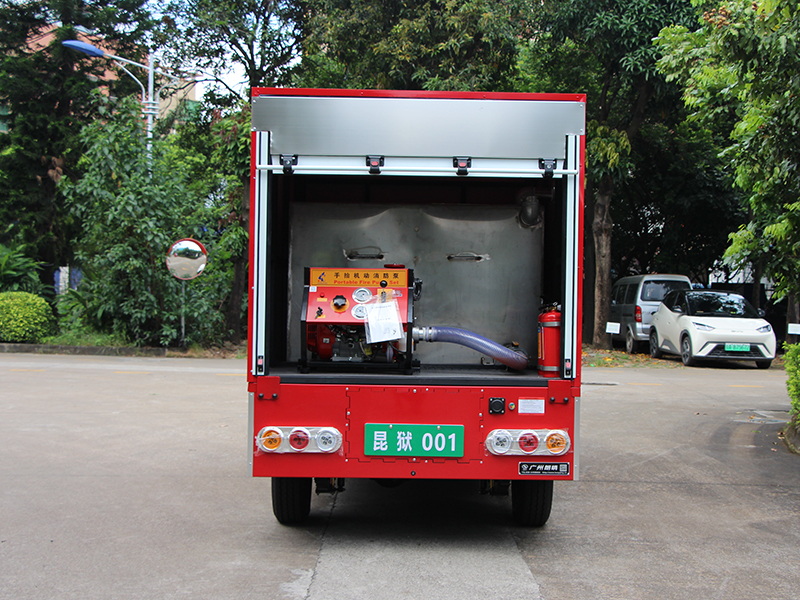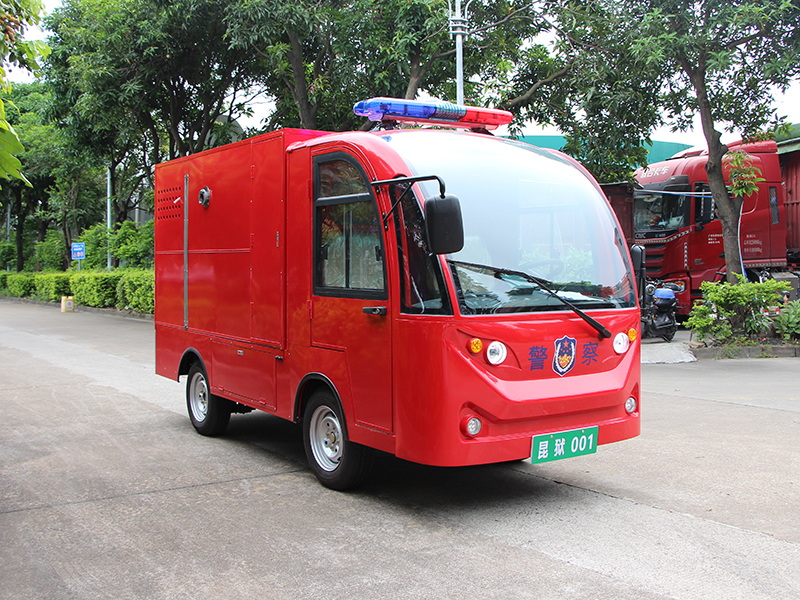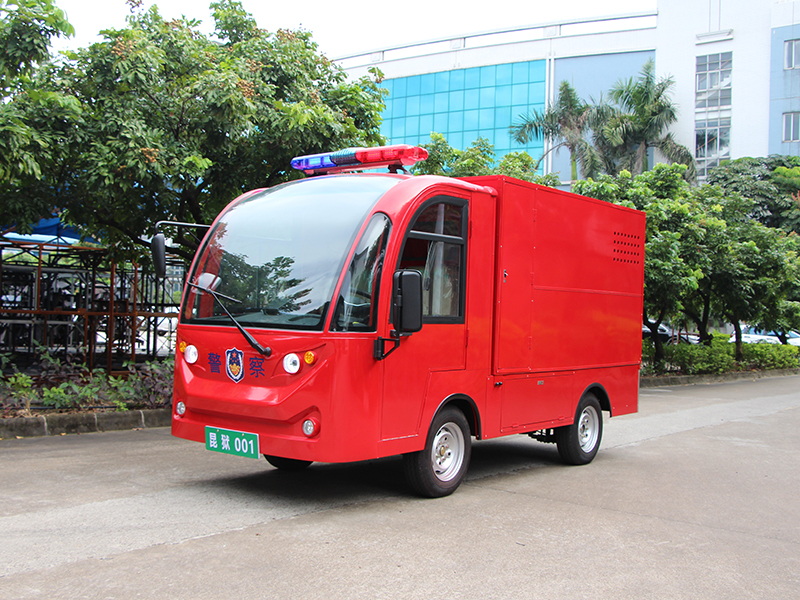Content Menu
● Introduction to the Lion Electric Ambulance
● The Partnership Behind the Innovation
● Key Features of the Lion Electric Ambulance
>> 1. All-Electric Powertrain
>> 2. Custom-Designed Chassis
>> 3. Ergonomics and Safety
>> 4. Reduced Noise and Vibration
>> 5. Advanced Technology Integration
● Why Cities Are Investing in the Lion Electric Ambulance Fleet
>> Environmental Sustainability
>> Operational Cost Savings
>> Enhanced Paramedic and Patient Experience
>> Government Support and Funding
>> Technological Leadership and Public Image
● Deployment and Impact
● Addressing Challenges and Future Outlook
● Conclusion
● FAQ
>> 1. What makes the Lion Electric ambulance different from traditional ambulances?
>> 2. How far can the Lion Electric ambulance travel on a single charge?
>> 3. Are there government incentives available for cities to purchase these ambulances?
>> 4. How many Lion Electric ambulances are planned for deployment?
>> 5. What are the main challenges of adopting electric ambulances?
As urban centers worldwide strive to modernize their emergency response systems, many are turning to innovative solutions that combine sustainability, efficiency, and enhanced safety. One such solution gaining significant attention is the Lion Electric ambulance fleet—a revolutionary all-electric ambulance developed through a collaboration between The Lion Electric Company and Demers Ambulances. This article explores why cities are investing heavily in this cutting-edge technology, what benefits it offers, and how it is shaping the future of emergency medical services.

Introduction to the Lion Electric Ambulance
The Lion Electric ambulance represents a major leap forward in emergency vehicle design. Unlike traditional ambulances powered by internal combustion engines, these vehicles are 100% electric, purpose-built to meet the unique demands of paramedics and patients alike. The ambulance is based on the Lion5 chassis, custom-designed for ambulance use, and features a medical compartment assembled by Demers Ambulances, a leading North American manufacturer of emergency vehicles.
This innovative vehicle is designed to address many of the challenges faced by traditional ambulance fleets, including emissions, noise pollution, and operational inefficiencies. By integrating cutting-edge electric vehicle technology with the specialized needs of emergency medical services, the Lion Electric ambulance offers a compelling alternative for cities looking to upgrade their fleets.
The Partnership Behind the Innovation
The development of the Lion Electric ambulance is the result of nearly five years of collaboration between Lion Electric and Demers Ambulances, supported by the Quebec government and the National Research Council of Canada Industrial Research Assistance Program (NRC IRAP). This partnership brought together expertise in electric vehicle manufacturing and emergency vehicle design, incorporating extensive feedback from paramedics and emergency medical service companies to ensure the ambulance meets real-world operational needs.
This collaborative approach has allowed the creation of a vehicle that is not only environmentally friendly but also highly functional and reliable in emergency scenarios. The involvement of government agencies has also helped accelerate research and development, ensuring that the ambulance meets rigorous safety and performance standards.
Key Features of the Lion Electric Ambulance
1. All-Electric Powertrain
The ambulance operates entirely on electric power, eliminating tailpipe emissions and reducing environmental impact. It offers a driving range of over 160 miles on a single charge, sufficient for typical urban and suburban emergency operations. The electric powertrain also delivers instant torque, which can improve acceleration and responsiveness—critical factors when responding to emergencies.
2. Custom-Designed Chassis
The Lion5 chassis was specifically engineered for ambulance use, providing superior maneuverability with a best-in-class turning ratio. This enhances the vehicle's ability to navigate tight urban streets and respond quickly to emergencies. The chassis design also ensures a low center of gravity, improving vehicle stability and safety during high-speed responses.
3. Ergonomics and Safety
The interior layout has been rethought to improve paramedic comfort and efficiency. A patent-pending FX mobility seat allows paramedics to move freely and provide care while safely buckled in during transit. The ambulance offers 12% more room in the medical module compared to traditional designs, improving patient care and paramedic workflow. Additional safety features include advanced lighting systems for better visibility and collision avoidance technologies.
4. Reduced Noise and Vibration
Electric propulsion significantly reduces noise inside and outside the ambulance, creating a calmer environment for patients and allowing paramedics to communicate more effectively during transport. This quieter operation also reduces noise pollution in urban areas, contributing to overall community well-being.
5. Advanced Technology Integration
The Lion Electric ambulance is equipped with modern telematics and connectivity features that enable real-time communication with dispatch centers and hospitals. These systems improve coordination during emergencies and allow for better tracking of vehicle status and performance, facilitating proactive maintenance and fleet management.

Why Cities Are Investing in the Lion Electric Ambulance Fleet
Environmental Sustainability
Cities worldwide are under increasing pressure to reduce greenhouse gas emissions and improve air quality. The Lion Electric ambulance fleet aligns perfectly with these goals by providing a zero-emission alternative to traditional ambulances, helping cities meet climate targets and reduce their carbon footprint. This is especially important in densely populated urban areas where air pollution can significantly impact public health.
Operational Cost Savings
Electric ambulances have lower maintenance and fuel costs compared to diesel or gasoline-powered vehicles. The fewer moving parts in electric drivetrains mean reduced wear and tear, while electricity is generally cheaper than fossil fuels. Over time, these savings can be substantial for municipal fleets. Additionally, electric vehicles often have longer service intervals, reducing downtime and improving fleet availability.
Enhanced Paramedic and Patient Experience
The ergonomic design and quieter operation improve the working conditions for paramedics and the comfort of patients during transport. This can lead to better patient outcomes and higher job satisfaction among emergency responders. The improved interior space and mobility features also allow paramedics to deliver care more effectively en route to medical facilities.
Government Support and Funding
Many cities benefit from government grants and incentives aimed at promoting electric vehicle adoption. The development of the Lion Electric ambulance was supported by government programs, and ongoing funding opportunities make the transition financially viable for municipal fleets. These incentives help offset the higher initial purchase price and encourage wider adoption.
Technological Leadership and Public Image
Investing in advanced electric ambulances positions cities as leaders in innovation and sustainability. It demonstrates a commitment to public health, environmental stewardship, and modern emergency services, enhancing the city's reputation and community trust. Public awareness of such initiatives can foster greater community engagement and support for local government policies.
Deployment and Impact
The agreement between Lion Electric and Demers Ambulances contemplates the deployment of at least 1,500 all-electric ambulances over five years across North America, with plans to expand globally. These ambulances are already generating interest from first responders, fleet managers, and policymakers, particularly in metropolitan areas with ambitious electrification plans.
Early adopters have reported positive feedback regarding the vehicle's performance, reliability, and operational benefits. As more cities integrate the Lion Electric ambulance into their fleets, the cumulative environmental and economic impacts are expected to grow significantly. This large-scale deployment also encourages further innovation and infrastructure development to support electric emergency vehicles.
Addressing Challenges and Future Outlook
While the Lion Electric ambulance offers many benefits, there are challenges to widespread adoption:
- Charging Infrastructure: Cities must invest in adequate charging stations to support ambulance fleets. Fast-charging capabilities and strategically located charging points are essential to ensure ambulances remain ready for rapid deployment.
- Range Limitations: Although sufficient for most urban needs, range may be a concern for rural or extended operations. Ongoing improvements in battery technology are expected to extend range and reduce charging times.
- Initial Cost: Higher upfront costs compared to traditional ambulances can be a barrier without subsidies. However, total cost of ownership analyses often show long-term savings that justify the investment.
Looking ahead, advances in battery technology, vehicle-to-grid integration, and autonomous driving features may further enhance the capabilities and efficiency of electric ambulances. Cities that invest now position themselves to benefit from these innovations as they become mainstream.
Conclusion
Cities are investing in the Lion Electric ambulance fleet because it represents a transformative step in emergency medical services—combining sustainability, cost-efficiency, and enhanced safety and comfort for paramedics and patients. With strong government backing, innovative design, and growing interest from first responders, the Lion Electric ambulance is poised to become a cornerstone of modern urban emergency response, helping cities build greener, smarter, and more resilient public health systems. As more municipalities adopt this technology, the benefits will multiply, contributing to healthier communities and a more sustainable future.

FAQ
1. What makes the Lion Electric ambulance different from traditional ambulances?
The Lion Electric ambulance is fully electric, with a custom-designed chassis and interior optimized for paramedic ergonomics and patient care. It offers zero emissions, reduced noise, and innovative safety features such as the FX mobility seat.
2. How far can the Lion Electric ambulance travel on a single charge?
It has a driving range of over 160 miles, suitable for most urban and suburban emergency response needs.
3. Are there government incentives available for cities to purchase these ambulances?
Yes, the development and deployment of the Lion Electric ambulance have been supported by government programs, and many cities can access grants and subsidies to offset costs.
4. How many Lion Electric ambulances are planned for deployment?
The partnership between Lion Electric and Demers Ambulances plans to deploy at least 1,500 electric ambulances over the next five years in North America, with potential global expansion.
5. What are the main challenges of adopting electric ambulances?
Key challenges include the need for charging infrastructure, managing range limitations for some operations, and higher upfront costs compared to conventional ambulances.










































